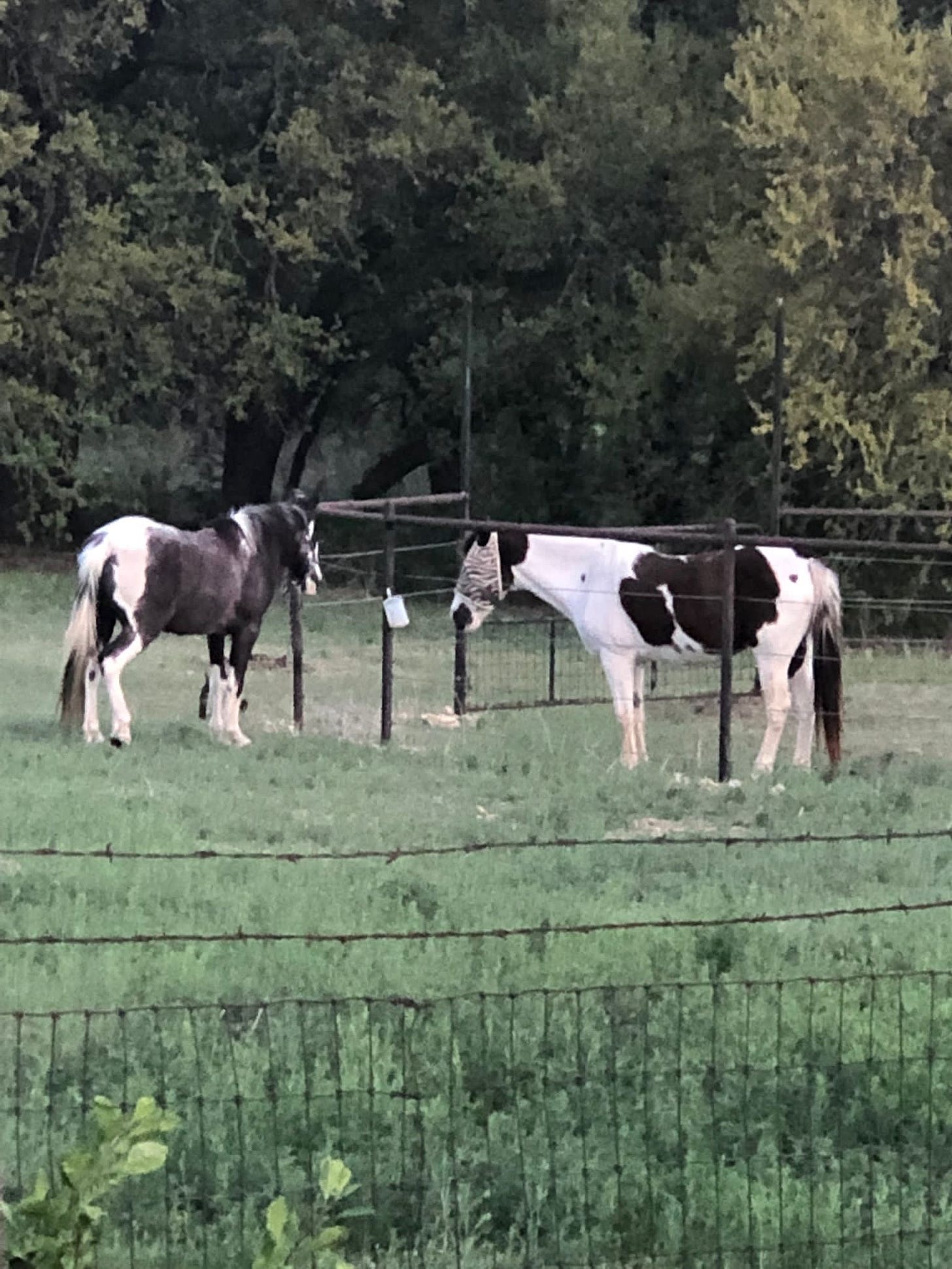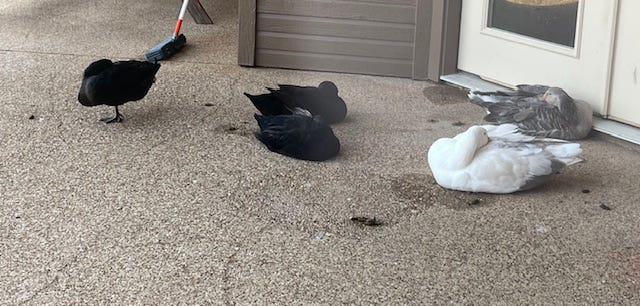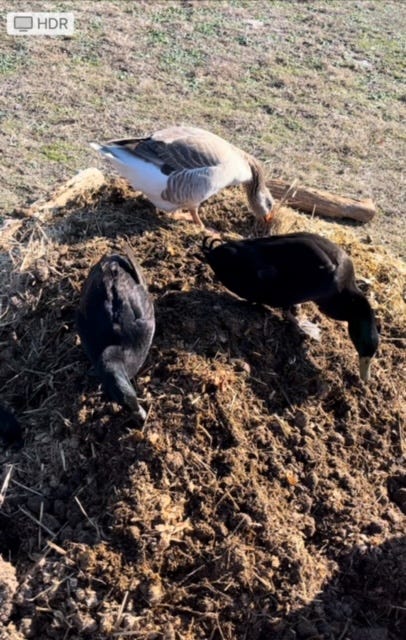Soil sucks
Composting
Ok, I have a confession to make. I am a plant serial killer (cereal killer…ugh). I don’t buy plants, I bury them. My place becomes their final resting place. And not even for a cause, since their brittle brown remains end up blowing away in the wind instead of feeding the next generation. So I’ve been trying to take steps to improve myself and become a maven of the garden so I can help other struggling gardeners with tips and advice:
First, do a soil test. What? I don’t have time for that…much less to test multiple areas to determine what’s wrong with each and how to fix it. Where we live, the “soil” consists of clay over sheets of limestone. Clay is impossible for most anything to grow in, because its density retains too much water that when it dries out (every summer from February to November) creates large cracks. The only things that do well with minimal intervention (cutting off dead bits is all) are agaves and red yucca because of its taproot. Everything else needs amendments, watering and fertilizing.
Soil improvement for clay would involve gently mixing sand and organic material to a depth of halfway to China whilst aerating and not further compacting over a span of a century. Yeah, also not really doable for me. Despite paying good money for a gardening class (I’m that bad at it/desperate) with an amazing teacher, I even fail at composting.
Have you tried it? Mixing ratios of green and brown, turning it over like a pancake every day, some people even stick thermometers in there to see if baby is running hot or too cold (?) and are rewarded with abundant, happy crops. If you’re one of those people, this is not the site for you…you don’t have to leave, but I envy you and your abilities! If you’re like me, a plant murderer and a compost failure, please stick around and let me share some tips with you.
I don’t aim for compost because that’s still out of my league yet. I aim for “soil amendment” based on what I need and have on hand. What I need is to “lighten up” the clay which is achieved by adding anything, so my brand of compost works here. Clay soils also tend to be alkaline (basic) and many of the things I add to my compost are acidic to help even that out. Fertilizing is accomplished through the decomposition of the compost as well as the ingredients from the “what I have on hand” part.
Recently, I started saving kitchen scraps in a small tub next to our sink. What goes in there travels to the compost pile where it becomes minimal-effort soil amendments as well as another significant benefit that is keeping 20-50% of “stuff” out of the landfill. What doesn’t go: meat, bones, grease, cheese, fatty stuff (nasty smells plus attracts varmits). What does go: eggshells, all vegetable clippings, skins, seeds, stems, except citrus*, coffee grounds with filters. In our household, the coffee grounds are a daily and considerable occurrence, so being able to chuck them, filter and all, into the pile is satisfying. Coffee grounds are acidic, for plants that love acid soil, but mixed in with the compost buffers it for the plants and the coffee smells nice. The paper will break down as well and counts as a brown ingredient (more on that later).
The other compost component I have on hand, every day, forever, abundantly, is manure. You urbanites cannot use this as an ingredient, since dog and cat skat being so heavily meat-based cannot be used in composting. Our ‘stead has a combination of horse and poultry manure, mixed with shavings and straw. It’s actually a highly technical ratio of which I allow the animals to determine the exact blend every day. Manure counts as a green ingredient, whereas both straw and shavings are considered brown.
The hay burners taking a nap.
Let’s talk about manure, baby. Fresh horse manure can burn plants - is what you’ll see everywhere, and yet, after many years of feeding, owning, feeding, riding, mucking, feeding, and hauling horses, I have yet to see evidence of this. Since I don’t own a manure spreader - scratch that, I AM the manure spreader bwahahahahaha! I often will collect fresh piles from the pasture on my way between mucking the barn and the compost pile. I have never seen “burned” plants under the piles. The owner of one of the barns I stalled my horse at would rope off an area of lawn, add horse manure, water once a day, and in a week have green grass growing that would eventually get thicker and rope removed, would allow horses to munch on between rides. He must be one of those gifted compost folks! But anyway, despite all of the warnings about adding fresh manure to plants, I have not been so exacting. It could also be a factor of what the horses are eating - mine are 80-90% forage with a small bit of grain tossed in, so I imagine a higher amount of grain could cause really potent poo that could burn plants.
Another important aspect of mucking stalls for your compost is the urine from horses. Moisture and the ingredients in urine are great for your pile! My gardening teacher proudly showed us his assembly-line compost piles and stated he would regularly “water” his piles because it was so beneficial (he lived alone un- or perhaps intentionally). The mares I’ve owned have been horrible pigs while in a stall, peeing a lot and walking through and over their apples until every time I muck, I have to basically strip the stall. Geldings are generally neater and my current hay burner usually leaves his in convenient non walked-through piles I can easily clean up.
After mucking, I follow up with a deodorizer/drying agent on wet spots. My favorite for stalls or coops is Sweet PDZ or equivalent. This is a clay-based powder that is safe and helps cut down nasty and dangerous ammonia and absorb smells. When I strip stalls for the season, I always do a generous layer of this and allow a few days to fully dry before adding straw or shavings again. This is also perfectly fine to get into your compost pile and won’t affect a thing.
Turkey manure (this is a family site, I can’t use the colloquial term) like its cousin chicken, is high in nitrogen (green) and also has the fame of burning plants when added directly. I haven’t seen this happen, either, mostly because I end up mucking turkey droppings along with the shavings it’s dropped in. It seems to hold its shape until a lot of watering and breaking down occurs. I used to just sweep it out of the barn vs. adding it to the pile and read somewhere that it can take a year to see results of the fertilizing effect. Having more turkeys plus mucking everything at the same time means I have been adding it to the pile where it quickly blends in. My determination on the fertilizing ability of turkey manure (composted or not) is still pending.
Duck manure…wow, this is a force unto itself! Maybe I should talk first about goose manure, or “goose logs” as they’re known in my family, deposited on the back porch, driveway and sidewalks. Geese eat mostly plants, green or dying, and drink a lot of water, so their poo is similar to horse manure although thankfully smaller in size (but not amount). Once it dries some, it basically can be swept away. Now, duck poo is a multi-colored, multi-cultural, vertical and horizontal skidmark you should be prepared for often and everywhere if you’re even considering being around ducks. It is wonderful for the compost pile, but is a free spirit and cannot be contained or forced to choose a major. The only way I can add it to the pile is by mucking out the duck stall (the geese, ducks and rebel turkey Bob sleep in there). The stall has deep-ish straw, because I store the bales in there and the geese shred the haystrings which leads to a cycle of mucking-straw deposits-mucking. Straw does not absorb water (compared to shavings or even pelleted shavings that break down into a sawdust), so makes an excellent addition to your pile or can be used straight away to mulch plants. I’m pretty sure waterfoul poo (that’s not a typo) can go straight on plants without allegedly burning, but I’d stick to only using it on outdoor plants.
Naps and poo always go together.
As promised, Nitrogen (green) and Carbon (brown) components are the building blocks to your compost. A one green to three brown is ideal. Now, having said that, this part was also daunting and confusing to me. Who is out there measuring ratios in a compost pile, making a list and checking it twice to see if it’s been nitrogen or nice? Compost Santa, hurry down this chimney tonight!
Things in the compost ratio actually match their color: manure is green, straw/shavings are brown, coffee is - wait, that’s where it kind of breaks down (haha, see what I did there?). Actually, more than not, the color doesn’t match the category, so instead of trying to keep up with a list, I try to think in terms of what a possible ingredient can contribute to the compost. Feathers, especially with a growing, mixed flock that molts several times a year, are good for composting as a green and it’s not like I can separate the feathers out while mucking anyway! Feathermeal is a sizeable byproduct to the slaughter industry, so is packaged and sold as an ingredient in pet foods or fertilizers. Feathers are basically straight up protein (your birds will need more protein while molting to make healthy new feathers) and have a high amount of nitrogen to contribute to the pile. Ashes from fireplace and firepit, especially from hardwoods like the oak we burn a lot of, is another good compost ingredient as a brown. Just make sure it’s days old and cold so you don’t set your garden on fire (true story, just ask my dad if the compost in the garden is flammable). Yard clippings is a Janus ingredient, depending on what it is or contains more of, but thankfully follows the color code - green grass, plants are green and dry leaves, sticks are brown. Paper is a brown if you need to bulk up that ratio or just don’t want to separate out the coffee filters or tea bags. I do struggle with big chunks of cardboard or layers of newspaper breaking down adequately, so prefer to burn those in my firepit first and add later as ash.
I also add to the scrap tub the uh, residue from our indoor birds: paper linings from their cage bottoms, their poops, feathers and seed hulls from their food. This is probably an even steven mix of green (poop, feathers) to brown (paper, seed hulls) instead of one to three.
The feathered weasels, Príncipe Pío and Atocha, contributing to the compost.
Water or moisture is also important to compost because without it, or if allowed to dry out, your browns will blow away in the wind while your greens won’t break down, they will just shrivel and not be useable. If you don’t get enough water added regularly (through ingredients or rainfall), a sprinkler right over your pile just ten minutes a day before you turn is necessary. Also, all of the bug friends you need for good compost (roly polys, earthworms and the like) appreciate moist environments without being soggy.
Turning or mixing. If you want a ringside seat, the debate on how often you should turn the pile is stimulating. I am in the not-every-day camp myself, mostly because I have other things going on that preclude me from massaging the pile every day. When it’s wintertime, I end up turning it daily simply because I have overnight stalls to muck every day and am already there. Otherwise, I wait until my scrap tub is getting full or the pile looks kind of dried out on top. When I turn it, I end up either moving the pile while turning it over or piling it taller on itself. I try to leave a trench or bare area for the next time I add scraps, so they end up being buried on the bottom and break down faster. Any chunks I discover while turning I attempt to leave inside or under the pile instead of on top - you don’t want all that composty goodness walking off and not contributing to your plants!
The wheelbarrowfuls from the barn every morning don’t get put in these trenches, but tacked on to the edge so they can age a few days before getting turned in to the older pile, which brings us to
Location. Where to put the thing? For urbanites, there are plenty of container composters available, even ones that can be turned over on a swivel. Pro tip for any of us - beyond the smell or proximity to coop, access to it by critters, etc. is to locate it near water! No one wants to haul buckets to water a compost heap and end up losing it all through drying out, so locate it near a water source or reachable by hose, preferably with a sprinkler attached. You don’t want streambeds cut through your pile or all of the compost juice to run off, either.
Temperature. Ok here’s where I really get lost in the woods. Apparently, compost has to “cook” to a certain temperature to kill Pathogens and Weed Seeds (hmm…this is going to be the name of my cover band). My compost has never gotten warm beyond whatever ambient temp is, as far as I can tell. The verdict on how my soil amendments (not compost, right?) will perform, both applied directly and in containers** is still pending on how my plants do in 2024. My horses eat dried forage hays or graze on the pasture, so I’m not sure “weed seeds” is anything I can worry about or even control. I haven’t seen any seeds make it through my flock’s manure (they all have a crop with grit in it to break their food down) and the indoor birds don’t usually let a good seed get past them. If there happens to be one that does get through and germinates successfully, it’s not anything I’d mind growing anyway (millet, peas, safflowers). Plus, there is a bonus to being a plant murderer in that if you germinate and grow successfully under MY watch, you deserve to be here!
Alright, time to get working on your own pile! How do you know if it’s good enough? A big tell is the smell…decomposition or rotting smell is bad, so troubleshoot if it was an ingredient or too much moisture? Throw it out or spread it all out to dry and start over. An earthy smell is what you’re look-sniffing for and means it’s working. Even if things get funky, you’ve learned and tried something new, kept things out of the landfill, and are contributing to soil and water locally for yourself but also contributing to our planet. Score!
References
The EPA’s informational site on composting and landfills. It’s mostly accurate, except for the table on methane emissions that completely ignores raising livestock (especially cows) as a principal source of methane beyond oil and gas. The landfill information is relevant to us all, whether urban or rural, in our case, which have to pay for garbage pickup and disposal services that don’t offer bells and whistles such as recycling.
*Citrus in the compost is usually listed as a no due to the chemicals sprayed on the peels and being a deterrent/killer for the insects you actually want to attract to your pile to help break it down. I have not set a hard ban on citrus in the scrap tub because I don’t want to have too many rules for the cooks (my husband and son) that would discourage them from using the scrap tub. The bulk of my pile usually makes up for any citrus chunks, usually halves from juicing/garnishing, which take longer to break down but don’t seem to deter any insects from what I’ve observed.
**I discovered a good use for all of those empty feed sacks from horse and poultry food. I layer manure, straw, shavings, etc. and shake them down, topping off with a straw layer. I want to see if this method can help skip the composting part and still work to grow things in “containers”. These babies will be exposed to the elements along the fenceline before I add plants and should result at the very least in “rotted manure”, even if I have to dump it out. If the bags last a season or more as a container, eventually the contents will be dumped anyway to bolster topsoil or pretend to be mulch.






